In order to meet best practice, industry requirements and environmentally responsible behaviours, workplaces need to assess the current practice in line with industry benchmarks and identify where changes can and needs to be made. At an early childhood education and care service it is important to provide a natural outdoor learning environment that includes diverse features designed to promote structured and unstructured physical activity, play, and learning. Many services within metropolitan areas do not have traditional outdoor spaces with fresh air; however, with innovative thinking and creativity a stimulating natural environment can be created for all the benefits of (natural) outdoor play and learning environments.
Benefits of natural outdoor play and learning environments:
- Improves self-regulation
- Advances physical fitness and gross motor development
- Improves nutrition
- Improves eyesight
- Promotes cognitive development
- Improves academic performance
- Lessens the symptoms of ADHD and improves concentration
- Promotes self-confidence
- Builds understanding and appreciation of ecosystems, food systems, and environmental processes
Learning Outcome 2 of the EYLF also aims for children to become socially responsible and show respect for the environment. This includes the following:
Children should be encouraged to:
- demonstrate an increasing knowledge of, and respect for natural and constructed environments
- explore, infer, predict, and hypothesise in order to develop an increased understanding of the interdependence between land, people, plants, and animals
- explore relationships with other living and non-living things and observe, notice and respond to change
- develop an awareness of the impact of human activity on environments and the interdependence of living things.
Educators can facilitate Learning Outcome 2 by:
- Modelling respect, care and appreciation for the natural environment
- finding ways of enabling children to care for and learn from the land
- sharing information and provide children with access to resources about the environment and the impact of human activities on environments
- embedding sustainability in daily routines and practices.5
Knowledge check
By the end of this topic, you will understand:
- Elements of sustainability
- National and international requirements for workplace sustainability
- Key issues.
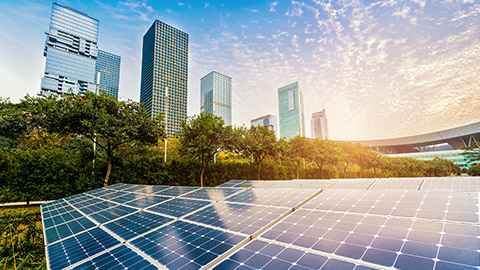
In summary, environmental sustainability is typically described as ‘meeting the needs of the present without compromising the ability of future generations to meet their own needs’.
In 1987, the term sustainability was explained by the Brunt land Commission Report as focusing on ‘how we use our world and its resources now and the impacts that it will have on ourselves, but mostly on future generations and the health of the world’.
Sustainability can involve all aspects of one’s life including thinking and acting in a sustainable way throughout the daily routines, processes, practices and systems of an organisation; that is, always considering how actions are impacting on the planet.
As a business model, environmental management means that you are aware of how your business affects (or has the potential to effect) the environment and that you take actions that lead to continuous improvement toward minimising your environmental ecological footprint.
The word sustainability is commonly discussed and implemented at many levels around the world, but what does it really mean? To be sustainable, it is important to know how this looks in action. Many people describe it in many ways and also have different feelings and attitudes about its relevance, need for existence, importance and how to embed be sustainable practices in the workplace.
Sustainability development in the workplace
Sustainability is considered as the long-term goal, whereas environmental responsibility refers to the short-term thoughts, actions and operational processes developed by an organisation to become sustainable in the long term. Sustainable development supports the changes, pathways and steps we take to become sustainable or the development that supports the present needs without compromising the needs of future generations.
Evidently, the principle of sustainability in an ideal situation would mean a strategy that articulately promotes environmental conservation, enhances natural resources management, promotes the development of regional areas and has community support.
As well as being environmentally responsible, making your service more sustainable has many benefits, including:
| Cost savings | Lowers cost by minimising energy, water, wastage and materials |
| Business reputation | Families and members of the community are eager to see and support services that support environmentally responsible practices |
| Resource recovery | Reducing, reusing and recycling can be economically more profitable and is also an important element for economic and environmental sustainability |
| Work health and safety | Workplaces can see improved health and safety by reducing the use of chemicals and minimising waste |
| Legal compliance | Means the service works towards meeting environmental protection laws |
When an early childhood education and care service is working on the improvement of their environmental and resource sustainability, they should consult industry benchmarks set and explained by:
- Guide to the National Quality Framework as it provides a comprehensive guide to interpreting the requirements of the NQF. The Guide provides information for all service types in all states and territories, providing detailed explanations of applications and approvals, operational requirements, and the National Quality Standard. The Guide also includes information regarding the assessment and rating process, making the A&R process transparent for both assessors and providers.
- National Quality Standards (NQS) which sets a high national benchmark for early childhood education and care and outside school hours care services in Australia is linked to the seven (7) quality areas. Services are assessed and rated by their regulatory authority against the NQS and given a rating for each of the 7 quality areas and an overall rating based on these results.
- ACECQA’s resources and newsletters sharing best practices and showcasing Excellent-rated services’ practice which can help other services to improve on their current practices.
Corporate sustainability emphasizes growth and profitability through intentional business practices in three areas of society. The goal is to provide long-term value for stakeholders without compromising people, the planet, or the economy.6
Corporate social responsibility (CSR) is a business practice that considers the impact a company has on society, employees, and other stakeholders. A CSR strategy is implemented by an organization to: minimize harm, practice fair business, be responsible along a global supply chain, exercise philanthropy and create a self-oriented human resource management system.
Practising good CSR is regarded as the engine of social sustainability and progress, supporting companies to fulfill their responsibilities as good citizens. CSR is a business commitment that contributes to corporate social sustainability. Corporate social sustainability works with employees, their families, local communities and society at large to improve human-life quality, the environment and the economy in the long-term.7
Business sustainability is a comprehensive approach to business management that works to maximize long-term economic, social, and environmental value. Sustainability aims to leave systems capable of continued existence. There are three (3) dimensions to a sustainable business model:
- Environmental: This refers to the environmental systems within which the business operates. Business operations can degrade nature and destroy ecological systems. Examples include deforestation and burning fossil fuels. By harming environmental systems, businesses prevent future generations from obtaining equal environmental value. This is not sustainable.
- Social: This refers to a business’s impact on social systems. Such systems include society, local communities, employees, consumers and other stakeholders. If business activities harm social systems, degrading the wellbeing of future generations, then operations are not socially sustainable.
- Economic: For a business to survive, it has to be financially stable. Economic sustainability means meeting the financial needs of a business, funding business operations and supporting sustainable social and environmental initiatives.
There are many other pillars or interchangeable terms used to describe the paradigms of sustainability, typically beginning with society, environment and economy, with sustainability at the centre of these.
The paradigms of sustainability can also be represented in the following ways:
The intertwined dimensions can also include a fourth element, culture. Let’s define each of the elements:
-
Society or social
Humans need to have the desire and understanding to support the impacts of corporations or the world on people and society. In business, it is about valuing the relationships with employers, employees and other stakeholders and the social value of the organisation’s processes and methods. These should be an important part of any business strategy and may include areas such as:
- Human rights
- Fair work
- Living conditions
- Health, safety and wellbeing
- Inclusion, diversity and equity
- Work/life balance.
According to the UN Global Compact, aiming for social sustainability can help businesses in a number of ways such as:
- Unlocking new markets
- Helping retain and attract business partners
- Becoming the source of innovation for new product or service lines
- Raising internal morale and employee engagement
- Improving risk management
- Improving company-community conflicts.
Nobel prize winning economist Laureate Amartya Sen describes social sustainability as having four dimensions. This article from ADEC Innovations explains these dimensions.
Learn more about how to achieve social sustainability in a business in this article from ADEC Innovations.
-
Economic
Economic sustainability refers to practices that support economic growth for the long term without having negative impacts on the community socially, environmentally and culturally. Some business models take an economic-only view of sustaining the business financially, while others take a green approach that includes cultural, social and environmental elements.
Economic sustainability for success: what it is and how to implement it
Economic sustainability refers to growth inclusive of practices that support the preferred percentage of its population below its preferred minimum standards of living level, without negatively impacting social, environmental, and cultural aspects of the community.
Economic sustainability is not about continual growth in wealth. It is multidisciplinary, with huge social and environmental factors. It is about the regeneration of life on Earth by meeting social and environmental needs. The core value of our emerging sustainable economy is about stewardship, rather than extraction – the positive of which feeds on the positive.
Economic sustainability is not possible with our current practices used to deliver a minimum living standard. To achieve economic sustainability our economy and our current way of life have to adapt.
We need to be more efficient in our use of available resources, find new ways to harness currently underused resources and reduce our consumption in the process.
Across the world, there are a multitude of social movements and grassroots projects underway, exemplifying what our next, leave-things-better economy could look like.
As it is explained by Jane Cortnell in her article on Process.st, the goal should be to create a world that can reach an economically sustainable level. That is, by reducing our ecological footprint, more people can live at a minimum living standard.
-
Cultural
This is the conservation of cultural beliefs, cultural practices, heritage and culture as its own entity. The aim is to ensure that the existence of different cultures, and their unique set of beliefs, morals, methods and collection of human knowledge, will exist in the context of the future.
Watch UNESCO explain culture and sustainability in this 2-minute YouTube video:
Pillars and business
Think about three (3) examples of how these pillars would entwine within a workplace. E.g. When a service sets up its own veggie garden:
- Economic—The service may reduce its expenses on vegetables and herbs.
- Society—Surplus vegetables and herbs can be given away to families in need.
- Environmental—The ecological footprint is minimised by reducing the need for purchasing products from shops, this way reducing fuel used for delivery/transportation.
Think about other examples within the early childhood education sector that can demonstrate how these pillars entwine within a service.
Click on the ‘Examples’ button to see if you considered the given examples.
- Reusing and repurposing materials for play, such as empty boxes, clothes for the dress-up corner, unused household items for home corner, etc. This can reduce the cost of buying resources, enhancing collaboration with families, while minimising waste within homes and the service.
- Grow and use vegetables and fruits from the garden to show children the complete cycle of ‘seedling to plate’. Teach children how to plant, nurture, then harvest vegetables and herbs to include them in a meal, or organise fundraising events where surplus vegetables and herbs can be sold within the community. The money raised can then be used to buy resources for the service. Alternatively, surplus vegetables and herbs can be donated to families in need within the service and/or within the community.
- Build a small chicken coup and teach the children to help care for the chickens and collect the eggs. Use the eggs in a meal or share them with their families.
Resource recycling ideas
You could keep/collect from families:
- Paper that has been used on one side so that the second side can be used.
- Old scraps of paper for paper mâché crafts.
- Broken items/spare pieces/oddments.
- Ask families if they can bring unwanted items in for activities, such as spare wrapping paper, old buttons and used packaging. This will provide a variety of materials for art and crafts.
Companies wishing to boost their value chain by taking a more enlightened and comprehensive role in CSR, can utilise a range of standards and reporting frameworks through initiatives such as:
- the ISO 26000 Corporate Social Responsibility standard
- the Global Reporting Initiative (GRI)
- the United Nations Global Compact (Australia)
- Corporate Responsibility Index (CRI) – not currently licensed in Australia
- Triple Bottom Line reporting
- The International Integrated Reporting Council (IIRC) – a global coalition of regulators, investors, companies, standard setters, the accounting profession and NGOs leading the development of a global framework for Integrated Reporting (piloted in Australia, April to June 2013)
- Accounting for Sustainability – set up by HRH The Prince of Wales in 2004 “To help ensure that sustainability – considering what we do not only in terms of ourselves and today, but also of others and tomorrow – is not just talked and worried about but becomes embedded in organizations’ “DNA”.8
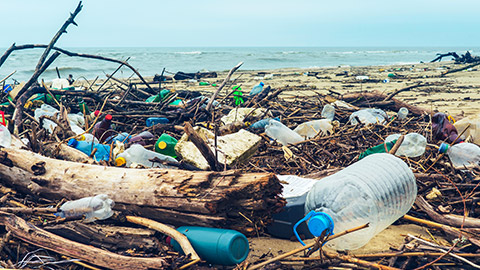
Environmental sustainability is reliant on action; talking about it does not make it better supported and build a healthier, more sustainable world, though it does engage more awareness.
Sustainability involves small steps that build to big steps and by exploring humans’ perceptions and treatment of the environment, observing how they have altered and threatened the very survival of humanity, demonstrates the need for our workplaces and future generations to embed responsible responses as soon as possible.
UNESCO is the United Nations Educational, Scientific and Cultural Organization. It seeks to build peace through international cooperation in Education, the Sciences and Culture. UNESCO’s programmes contribute to the achievement of the Sustainable Development Goals defined in Agenda 2030, adopted by the UN General Assembly in 2015.
Watch the following 3-minute video to learn more about UNESCO’s mission to build peace through international cooperation as it is the only way to build bridges between nations. Therefore, as a laboratory of ideas, UNESCO seeks to offer a broad range of expertise in the fields of Education, the Sciences, including natural, ocean and social and human sciences and Culture.
Learn about the seventeen (17) sustainable development goals by watching the following 2-minute video:
Check your understanding
You can read more about the Education for Sustainable Development Goals, a key element of the 2030 Agenda for Sustainable Development.
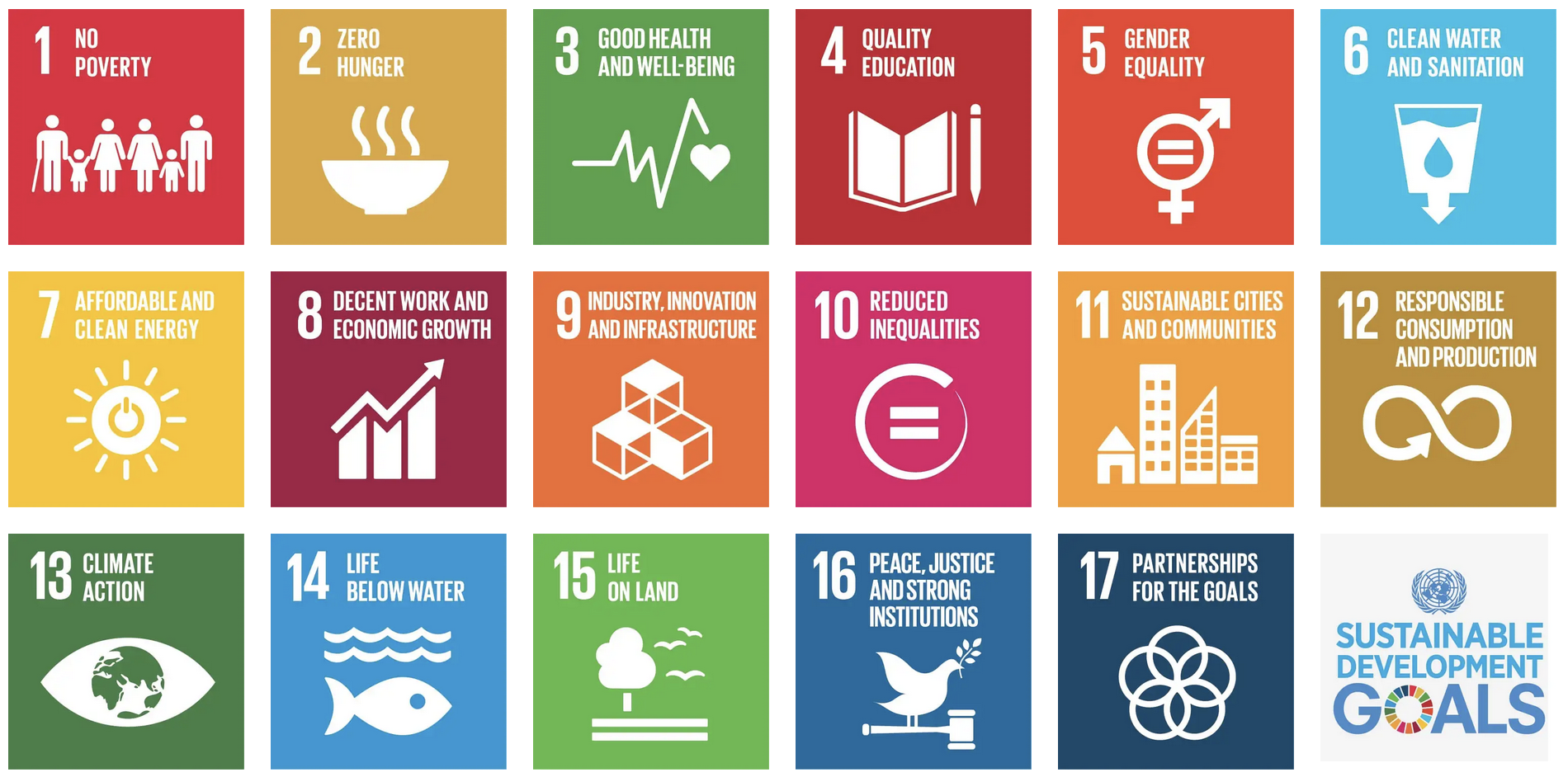
Complementary to the UNESCO guidance document - Education for Sustainable Development Goals - Learning Objectives, this resource bank has been designed for educators, education planners and practitioners. It offers hundreds of pedagogical ideas for classroom activities and multimedia resources detailing how best to integrate ESD into teaching and learning, from early childhood care through secondary education. An offline copy of the learning objectives can be accessed here.
Our ecological footprint
An ecological footprint estimates how the world can biologically produce or reproduce the earth’s resources within the ratio of how much we use. It refers to how much of an impact—i.e. footprint — we leave behind due to our effect on the world and changes we make.
think
What is your ecological footprint?
Click on the ‘Calculate your ecological footprint’ to complete the following WWF ecological footprint calculator to find out how you are using the earth’s resources and reflect on your score.
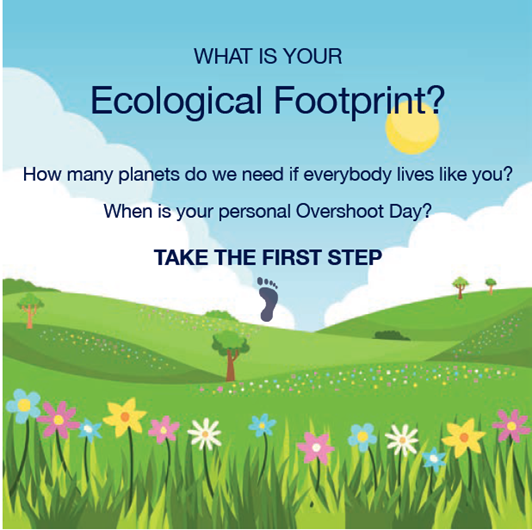
Access the link ‘Calculate your ecological footprint’ , then click on ‘Take the first step’.
Knowledge check
Think of ways you could reduce your ecological footprint. Click on the 'Answers' button to check your answers.- Reduce your use of single-use, disposable plastics
- Switch to renewable energy
- Eat less meat
- Reduce your waste
- Recycle responsibly
- Drive less
- Reduce your water use
- Support local
Environmental principles and key issues
There are numerous considerations we need to take into account when we delve into environmental or sustainable issues. Some are possible to work towards in business, depending on the business, while others may not be if they are irrelevant to the demographic or level of control.
These include the following:
1. Global warming and climate change
Global warming is the releasing of heat trapping gases, called greenhouse gases, causing changes to climate and weather patterns that change from place to place. Climate change, however, is the complex shifts that occur to the planet by these changes.
Watch the following 3-minute video by Christina Nunez for National Geographic to learn more about global warming:
You can read more about the causes and effects of climate change here, article published by National Geography.
Did you know?
- Arctic sea ice is rapidly diminishing. Temperatures in the Arctic are rising faster than almost anywhere else on the planet. Between 2011 and 2020, annual Arctic sea ice reached its lowest level since at least 1850 and late summer Arctic sea ice was smaller than at any time in at least the past 1,000 years.
- Two-thirds of extreme weather events in the last 20 years were influenced by humans. The number of floods and heavy rains has quadrupled since 1980 and doubled since 2004. Extreme temperatures, droughts and wildfires have also more than doubled in the last 40 years. While no extreme weather event is never down to a single cause, climate scientists are increasingly exploring the human fingerprints on floods, heatwaves, droughts and storms.
- Average wildlife populations have dropped by 60 per cent in just over 40 years.9
- More than 1 million species are at risk of extinction by climate change.
2. Pollution
In 2019, Jiajia Zheng wrote a paper on how to reduce the global carbon footprint in plastics and informed us that:
By 2050, plastic production is expected to make up 15% of global carbon emissions.
The seven (7) key types of pollution:
- Air
- Water
- Soil
- Noise
- Radioactive
- Light
- Thermal
These are interlinked and influence each other, as with biodiversity, primarily causing many of the effects on our environment today and taking millions of years to recoup. The worst pollutant is industry and motor exhaust, and water pollution consisting of oil spills, urban waste runoff and acid rain. Soil pollution is caused by the repercussions of industrial waste.
Watch the following 4-minute video from National Geographic to learn more about air pollution:
Read this article by Melissa Denchak from NRDC to learn more about water pollution.
Watch the following 3-minute YouTube video from NRDC flix to learn about the impact of seismic testing on marine life:
Did you know
- 1.91% of the world’s population are breathing in polluted air every day. According to the World Health Organization (WHO), it estimates that at least 9 out of 10 people across the world are living in places with polluted air.
- At least 1 in 10 people die from air pollution-related diseases. In 2017, air pollution was responsible for an estimated 5 million deaths globally, amounting to nearly 9% of the world’s population.
- Air pollution is a greater threat to life expectancy than smoking, HIV or war, literally cutting years from the lives of billions of people around the world. Though all top five countries with the worst air pollution are located in Asia, air pollution is a rapidly rising threat in Central and West Africa, where average life expectancy has dropped by two to five years.10
Water pollution
This occurs when harmful substances—often chemicals or microorganisms—contaminate a stream, river, lake, ocean, aquifer or other body of water, degrading water quality and rendering it toxic to humans or the environment.
Read this article by Melissa Denchak to learn more about the various types of water pollution.
Read more about pollution from Encyclopaedia Britannica.
Did you know?
- Every eight seconds, a child under the age of five dies from diseases related to contaminated water.
- 80% of ocean pollution comes from land-based sources - oil, pesticides, septic tanks, dirt, discharge of nutrients, untreated sewage, run-off, farms, motor vehicles, ranches, etc.
- Oil is more harmful to the ocean's ecosystem than waste and trash.
- The most common element found in the world's oceans is plastic, but there are also fishing gear and nets and cigarette buts.
- There are more microplastics in our oceans than stars in the Milky Way.
- 50% of all sea turtles, 44% of all seabirds, 22% of all cetaceans, and a long list of fish species have already eaten plastics. 11
Acid rain
When pollutants enter the atmosphere, such as fossil fuels, sulphur dioxide and nitrogen oxide, they are released from the atmosphere in wet and dry forms, which can include Acid Rain. Acid rain enters the community, including its water supply, which can cause harmful effects to the population, wildlife and aquatics species.
Watch the following 5-minute video from Kinetic School to learn more about acid rain:
3. Overpopulation and natural resource depletion
The continual overpopulation levels on our planet are reaching an unsustainable level, where populations are experiencing shortages of natural resources due to the high number of needs, including water, fuel and food. This is especially the case in demographics with fewer resources to offer their growing population. While agriculture is used to meet the needs of the community, it also pollutes by utilising fertilisers, pesticides and insecticides, causing further damage to the planet.
Read more in this article about our water crisis from Encyclopaedia Britannica.
Watch the following 18-minute YouTube video from the Center for Biological Diversity, which includes an interview with Countdown author Alan Weisman who asks the hard questions about overpopulation:
4. Waste disposal
Waste production is at catastrophic levels, with over consumption creating a huge threat to the environment, as non-biodegradable waste ends up in landfill and reaches waterways and polluting further. There are many schemes in place to minimise waste, especially hazardous waste to minimise pollution.
A recent study (Geyer, Jambeck and Law, 2017) found that of the 6.3 billion metric tons of plastic waste that has been produced, only 9% of that plastic waste had been recycled.
One approach to manage waste are green purchasing strategies. This is when organisations buy products and services that minimise negative environmental impacts by looking at the life cycle of manufacturing, transportation, use and recycling or disposal.
This includes products and services that:
- Promote long-lasting, high quality, reusable products
- Conserve energy and water
- Minimise the generation of waste and release of pollutants
- Decrease greenhouse gas emissions
- Take up less room in landfill
Check out the video links below to learn more about waste disposal:
- Watch the following series on ABC iView to learn more about waste: The war of waste
- Watch the following 2-minute YouTube video by Recycle Coach to bust some workplace recycling myths.
Visit the following websites to see how the City of Melbourne is supporting and funding businesses to be more sustainable:
See how the City of Melbourne is supporting businesses to minimise the use of single plastic in this 2-minute YouTube Video from Melbourne City Council:
5. Loss of biodiversity
Extinction of species and habitats equals the loss to biodiversity. Destroyed ecosystems are a threat to many species. Biodiversity can be seen through such examples as the lack of bees available to pollinate food, coffee and other plants that can provide nutrients for animals, including humans.
Watch the following 4-minute YouTube video from Conservation International to learn more about biodiversity:
In this article you can read Dr Holly Kirk's seven (7) recommendations regarding how local governments around the country can deliver high-quality biodiversity outcomes in their own urban environments.
The seven (7) recommendations are:
- Identify and protect existing vegetation
- Dedicate “green links” connecting workers and residents
- Make the most of green spaces and streetscapes for biodiversity
- Connect with Indigenous history and culture
- Create biodiverse freeway overpasses and bridges
- Put in place systems for long-term protection of biodiversity
- Manage key threats to biodiversity
6. Deforestation
The continual overpopulation levels on our planet are reaching an unsustainable level, where populations are experiencing shortages of natural resources due to the high number of needs, including water, fuel and food. This is especially the case in demographics with fewer resources to offer their growing population. While agriculture is used to meet the needs of the community, it also pollutes by utilising fertilisers, pesticides and insecticides, causing further damage to the planet.
Watch the following 2-minute YouTube video from WWF to learn about deforestation fronts:
7. Ocean acidification
As a direct impact of excessive production of carbon dioxide (it is estimated that around 25% of atmospheric Co2 is caused by humans), ocean acidity has increased and by 2100, it may have increased by as much as 150%, impacting on all sea life, but predominately shellfish and plankton.
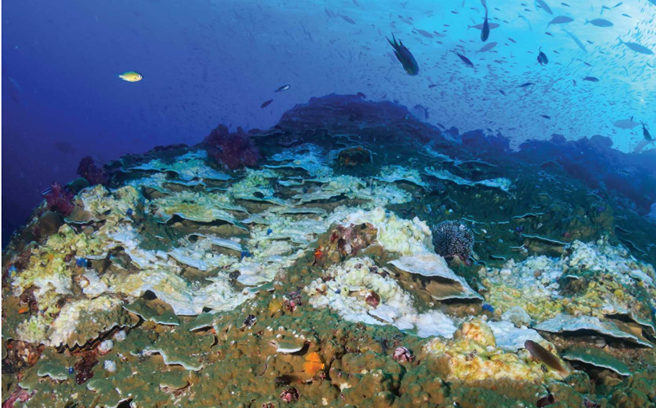
Watch the following video from NBC News Learn to learn more about ocean acidification:
Did you know?
According to Environment Tasmania, 90% of Tasmania’s marine life is found nowhere else on earth and only about 1% of it is protected.
Learn more about marine life in Tasmania on the Environment Tasmania website.
Here's an activity for you
1. Watch the following 4-minute video by Steve Cutts, published in 2012, on the sad truth on the impact of man on our world:
2. Reflect on how you have impacted on the planet just as humans have, even if it is simply eating lamb, buying cosmetics tested on animals, etc.
3. Remember, just because you do not drive a tractor in the forests of Borneo or other locations, it does not mean you do not potentially contribute to its destruction.
Knowledge check
Diverse thinking about sustainable practices
In any workplace, there will be different views about sustainability, its relevance and importance in the business world. It is important that all stakeholders understand the broad benefits of engaging in environmentally responsible practices, both in a business and environmental sense. Variations in views may be due to experience, interest, education, generational influence and culture. For example, Aboriginal and Torres Strait Islander people have a slightly different take on sustainability given their intrinsic and spiritual connection to the earth, land, water, air, community, flora, fauna and ecosystems:
We believe that Country is not only the Land and People, but is also the Entities of Waterways, Animals, Plants, Climate, Skies and Spirits. Within this, one Entity should not be raised above another, as these live in close relationship with one another. So People are no more or less important than the other Entities.
Aboriginal and Torres Strait Islander people use practices to read the environment and provide what the earth needs for survival, which is ultimately the survival of their own communities. They have always used sustainable practices in their everyday management of the land and understand the interconnectedness and interdependence of all life forms. For example, placing plants where needed to sustain environments, using fire for controlling ecosystems, and knowing when to fish, hunt and harvest. Aboriginal and Torres Strait Islander people consider the regeneration and cycles and patterns as law, and interrupting this is seen as an act against the laws of nature. They are always considering a sustainable concept known as the survival of seven generations.
Watch the following 3-minute YouTube video by Academic Algonquin to learn more about the Seven Generations:
First Nation’s sustainability concepts
| Mother Earth as a Life-Giving Force | In many First Nations languages, Mother Earth is depicted as a living person. If the inhabitants of this world continue to desecrate her, then she will no longer be a life-giving force./td> |
| Laws of Nature | There was a time and season for all life-sustaining activities. Animals were not killed during their reproductive cycles. |
| Life-Sustaining Elements of the World | Air: The essential element of human and all life forms. It also is the means by which one thinks and speaks.
Earth: Provides food and many other life-sustaining materials and resources. Fire: Provides heat and light. The Sun is fire. Water: Cools and nurtures, makes life and growth possible. Balance among the four basic elements, the innate capacities of humankind and the life-sustaining elements of nature makes it possible to live well and comfortably. |
| Interrelationships and Interconnectedness | Take no person, animal, or thing for granted. Everyone and everything has a role and a place. |
View this guide by Manitoba Education and Training to see how sustainability concepts can be integrated into new and existing curricula.
View this 3-minute ABC video on the First Nation's perspective on sustainability.
This article published by ACECQA showcases a nature pedagogy leader’s achievement regarding transforming a bare backyard into the Narragunnawali garden (also known as reconciliation garden). The article explains how the service involved the community, creating connections and relationships with members of the community. This also allowed the children to learn more about the role different people and organisations have in sustainability.
For example:
- Farmers donated manure bursting with earth worms
- A connection was made with a local hardware store who donated resources
- Jerusalem artichokes were sourced from the local Facebook Canberra Homesteaders group
- Wheelie bins were collected full of coffee grounds from a local café.13
Did you know?
Developing a reconciliation garden can foster an understanding of the importance of place and connection to Country, as well as of Aboriginal and Torres Strait Islander knowledge around the uses of bush foods or native plants. Creating a reconciliation garden is an example of a whole-school project that can be used as an anchor point for a wide range of relevant and significant curriculum activities.
Here are some examples of reconciliation gardens, developed with children’s involvement:

Australia has over 50 legislations that are relevant to environmental sustainability today and many of these are under review at the time of production of this content.
In 1999, the Australian Government’s Environment Protection and Biodiversity Conservation Act 1999 (EPBC Act) (Cth) was set forward (and commenced in 2000), providing ‘a legal framework to protect and manage nationally and internationally important flora, fauna, ecological communities and heritage places defined in the Act as matters of national environmental significance’. According to this, early childhood education and care services, just like any other business in Australia, must protect nationally significant animals, plants, habitats and places and avoid causing any damage to the environment.
They inform that the objectives of the EPBC Act (Cth) are to:
- provide for the protection of the environment, especially matters of national environmental significance
- conserve Australian biodiversity
- provide a streamlined national environmental assessment and approvals process
- enhance the protection and management of important natural and cultural places
- control the international movement of plants and animals (wildlife), wildlife specimens and products made or derived from wildlife
- promote ecologically sustainable development through the conversation and ecologically sustainable use of natural resources
- recognise the role of indigenous people in the conversation and ecologically sustainable use of Australia’s biodiversity
- promote the use of indigenous people's knowledge of biodiversity with the involvement of, and in cooperation with, the owners of the knowledge
In 2013, an amendment occurred that embedded the importance of ‘making water resources a matter of national environmental significance, in relation to coal seam gas and large coal mining development’.
Read more about the 2013 legislation amendment on the Australian Government’s Department of Agriculture, Water and the Environment website.
The Environment Protection (Vehicle Emissions) Regulations 2013 aim to minimise the negative effects of noise and emissions from motor vehicles by providing compliance information on air emissions (grossly polluted vehicle rule and diesel emission standards) and noise standards (noise tests and engine speeds) for vehicles on the road.
Environment is defined within the Environment Protection Act 1986 (Cth) as:
Environment means living things, their physical, biological and social surroundings, and interactions between all of these.
The definition of man’s social surroundings is also stated:
...the social surroundings of man are his aesthetic, cultural, economic, and social surroundings to the extent that those surroundings directly affect or are affected by his physical or biological surroundings.
According to the Environment Protection Act 1997, early childhood education and care services, just like any other business, must reduce and eliminate the discharge of pollutants into the air, land and water.
View the current Australian environmental legislation on the Australian Government’s Department of Agriculture, Water and the Environment website.
It’s important to note that each state and territory will also have their own coinciding legislation and codes.
You can view each of these by clicking on the relevant state/territory:
Licenses and permit
Each business is different and has different uses of the earth’s resources and hence, impacts on these. Many businesses need specific licenses or permits to allow their business to operate.
Learn about the various licences and permits businesses need on the Australian Government, Department of Agriculture, Water and the Environment website:
Principles
The following Environmental Principles (2020) were created in line with the Environmental Protection Act 1986 (Cth) and Australian Environmental policies. The principles are:
| Principle | Definition |
|---|---|
| Ecological integrity and maintaining biological diversity (Biodiversity) | Conservation of biological diversity and ecological integrity should be a fundamental consideration. This includes protecting all life forms; plant, animals and microorganisms understanding their intense interconnection in terms of each other’s survival. |
| Integrating environmental, social and economic considerations in decision- making | Environmental factors should be included in the valuation of assets and services(economy), including those generating pollution and waste. Users of goods and services should bear these costs. Environmental goals, having been established, should be pursued in the most cost-effective way, by establishing incentive structures, including market mechanisms, which enable those best placed to maximise benefits or minimise costs to develop their own solutions and responses to environmental problems. |
| Precautionary behaviour | Where there are threats of serious or irreversible damage, lack of full scientific certainty should not be used as a reason for postponing measures to prevent environmental degradation. In the application of the precautionary principle, decisions should be guided by careful evaluation and assessment of risk (risk management) to avoid, where practicable, serious or irreversible damage to the environment. |
| Equity for each generation and between generations | The present generation should ensure that the health, diversity and productivity of the environment is maintained or enhanced for the benefit of future generations (quality of life). |
| Waste minimisation | All reasonable and practicable measures should be taken to minimise the generation of waste and its discharge into the environment. |
| Democracy and governance | The process of informing participation and transparency of communities in situations of potential impact on actions. |
| Involving the community | Collaboration and involvement of communities’ work towards long-term goals for sustainability. |
| Continual improvement | Continual improvement is required for sustainability processes including the containing, minimising use of natural resources and production of damaging elements such as plastics and reviewing the impacts of elements, such as waste and environment pollutants. |
| Emissions | Actively identify and implement (where practical) improvements to minimise the production of greenhouse gases through our everyday activities. |
| Consumption | Actively identify and implement (where practical) improvements to minimise consumption and promote efficient use of energy, water, paper and other material inputs. |
| Transport | Consider environmental factors when purchasing and using fleet vehicles and travel sustainably when practical. |
| Infrastructure | Ensure all new capital works programs and office relocations incorporate comprehensive environmental sustainability principles. |
| Compliance | Comply with all relevant environmental legislation, regulations and policies. |
| Monitoring | Monitor and review your environmental performance against annually reviewed targets. Improve the quality of data collected and reported. |
| Communication | Communicate our environmental performance to all staff and stakeholders while encouraging participation and feedback. |
To learn more about policy and principle guidance, refer to this document from the WA Environmental Protection Authority.
Legal duty and codes of practice
Each state and territory has individual requirements regarding business licensing, operations, sustainable practice and environmental responsibility to ensure the prevention of environmental harm, nuisances and contamination. Each business will have a legal obligation and duty to these conditions, which apply to all businesses. Non-compliance can result in offences set by the jurisdictional environmental authority (EA).
View your state or territory’s environmental code of practice and EA for more information.
Here are some examples of environmental codes of practice and legal duties for various Australian states and nationally:
Use the following questions to check your knowledge. You can check the correct answer by clicking on the 'Answer' button:
1. What are the most common pillars of sustainable development?
- Society
- Economic
- Cultural
- Social
- Economic
- Cultural
- Society
- Economy
- Culture
2. What are some key environmental issues?
- Global warming and climate change
- Pollution
- Overpopulation and natural resource depletion
- Waste disposal
- Loss of biodiversity
- Deforestation
- Ocean acidification.
3. What is the current Environmental Act called that all businesses must comply with?
Answer the following four (4) questions to check your understanding of this topic. Click the dots to navigate between the questions.

